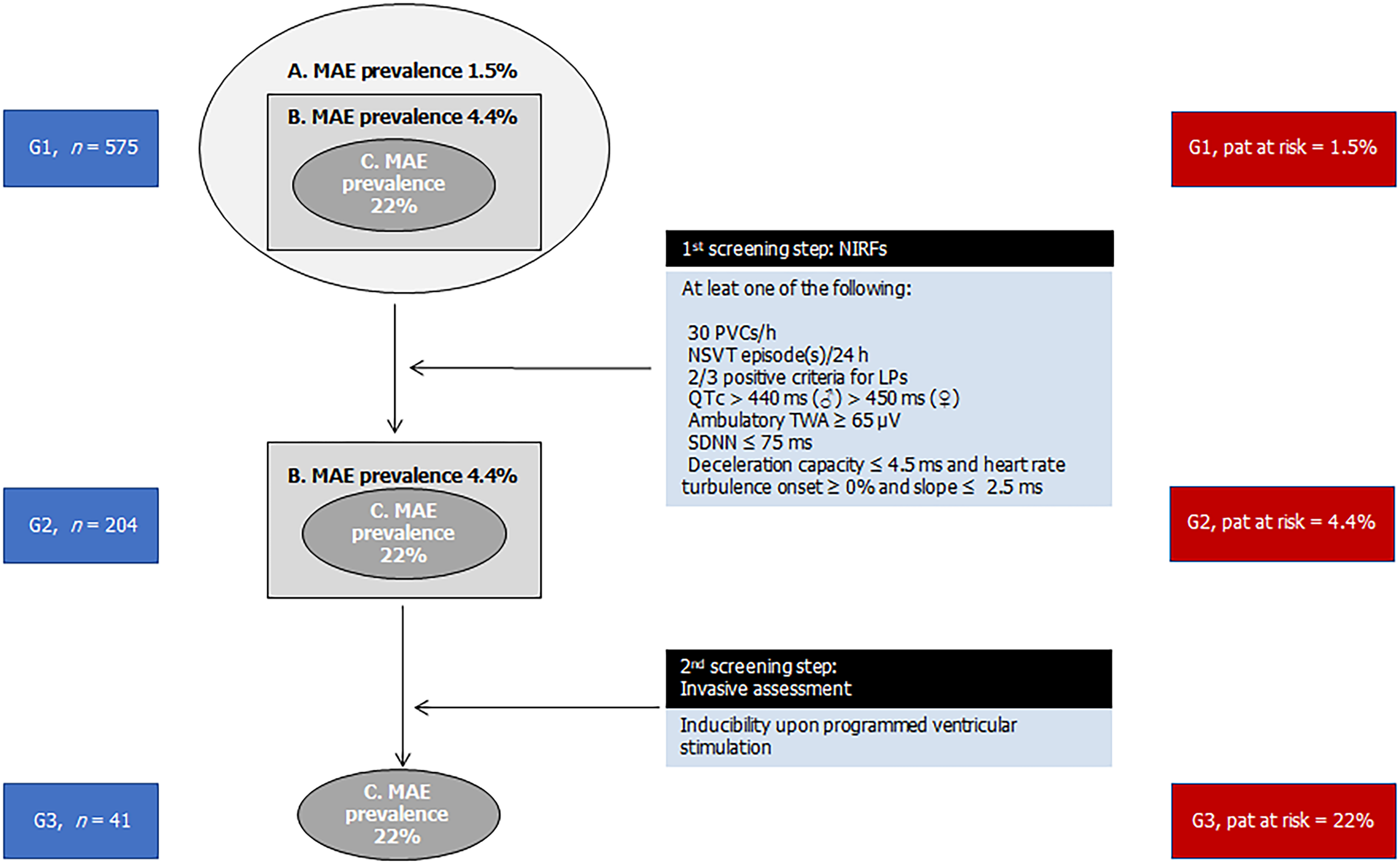Copyright
©The Author(s) 2022.
World J Cardiol. Mar 26, 2022; 14(3): 139-151
Published online Mar 26, 2022. doi: 10.4330/wjc.v14.i3.139
Published online Mar 26, 2022. doi: 10.4330/wjc.v14.i3.139
Figure 1 The PRESERVE EF[24] study’s two-step arrhythmic risk stratification algorithm.
In the total sample of patients the estimated prevalence of major arrhythmic events (MAE) during the 32-mo follow-up was 1.5%. Implementation of the algorithm with the detection of the NIRFs in the first step determines the intermediate-risk subpopulation, with the MAE prevalence accounting for 4.4%. In the second step, the Programmed Ventricular Stimulation determines the actual high-risk subpopulation, with a prevalence reaching 22%. Of the 37 patients with implantable cardioverter defibrillator, there were 9 true activations during the 32-mo follow-up. Neither sudden cardiac death(SCD) nor inappropriate ICD activations were observed during follow-up. (Modified with permission from EHJ[24]).
- Citation: Arsenos P, Gatzoulis KA, Tsiachris D, Dilaveris P, Sideris S, Sotiropoulos I, Archontakis S, Antoniou CK, Kordalis A, Skiadas I, Toutouzas K, Vlachopoulos C, Tousoulis D, Tsioufis K. Arrhythmic risk stratification in ischemic, non-ischemic and hypertrophic cardiomyopathy: A two-step multifactorial, electrophysiology study inclusive approach. World J Cardiol 2022; 14(3): 139-151
- URL: https://www.wjgnet.com/1949-8462/full/v14/i3/139.htm
- DOI: https://dx.doi.org/10.4330/wjc.v14.i3.139









